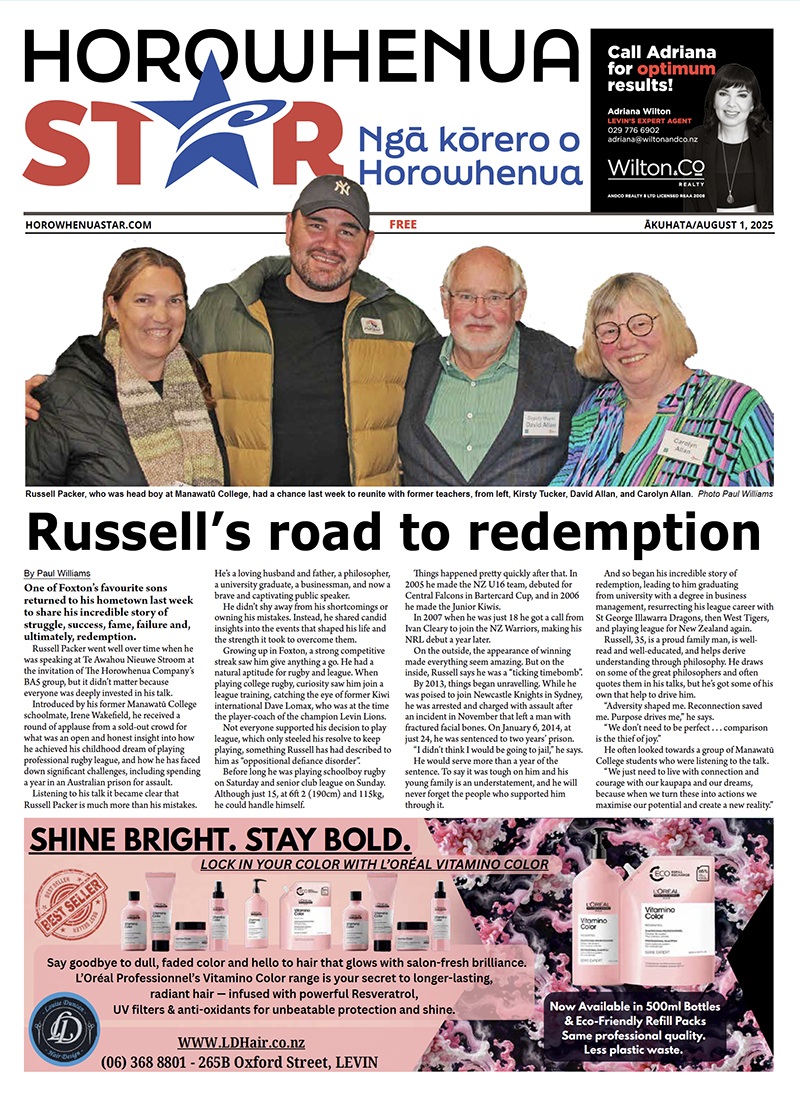
Recent and approaching developments in the real estate and construction sectors offer a public glimpse of the varying impacts the government’s involvement in housing provision produces across the commercial life of the country.
On the one hand Horowhenua real estate agents and developers around the country will be happy with the sales and replacement process initiated by Kāinga Ora. They can look forward to an opportunity to benefit from the state housing sales made under the programme to sell off about 900 homes over the next 12-18 months.
Graeme Broderick, Kāinga Ora’s regional director, Taranaki, Manawatū and Whanganui, says sales will be listed on the open market by real estate agents selected following a standard procurement process. He says it is important to note that the number of Kāinga Ora homes is not being reduced.
“For each existing Kāinga Ora home sold, a newly built home is delivered elsewhere.”
The agency is clearly sensitive to the needs of its tenants. It declined to spell out numbers likely to be for sale in the Horowhenua district and says information on specific sites is unlikely to be available until properties are ready for sale. Readying them for the market embraces discussions with tenants and potential placement of them in other Kāinga Ora homes prior to the sales process getting under way.
The government hopes that more than $500 million will be raised, with the money going towards the provision of more homes under Kāinga Ora stewardship.
On the other hand, the approaching closure of Fletcher Building’s $15 million prefabricated house building factory in South Auckland signals an all too frequent disconnect between what governments and their departments urge on industry, and marketplace reality.
It stands out as a lesson for businesses in the traps that abound when governments embrace theories of what should happen in free markets, and back them without making solid commitments to action that will ensure success.
Government ministers of the Ardern administration spurred on by the Ministry of Business, Innovation and Employment (MBIE) talked up and encouraged the construction industry to turn to prefabricated home building as the means of reducing prices of construction.
The government with MBIE as its agent wanted more housing built. It saw prefabrication as its solution to solve a persistent housing shortage. Greater scale of building and a speedier turnaround of construction from 22 weeks to about 6-10 weeks was promised by Fletcher when it established the factory in Wiri.
But despite the government’s enthusiastic words of encouragement for “prefabrication” during the 2017-20 period, there was never a massive forward commitment of government cash to Fletchers for the scale of building required to fully justify the investments in the new facilities.
Meantime, recent political polling suggests worrying times ahead for Labour. At this point in the electoral cycle the governing party or parties should be at a low point. But while Labour has made up ground on last year’s election results, it is currently in a zone that suggests many switch-voting, non-committed voters are neither “for nor against”.
What these voters can now be certain of is that the prospects of Labour campaigning on plans to introduce a tax of some form on capital are now close to zero. This was signalled by the decision of one of its elder statesmen, David Parker, to stand down from Parliament next month.
As a senior cabinet member in the Hipkins administration, he, along with Grant Robertson, worked at developing plans for such a tax. It was ruled out by party leader Chris Hipkins as a campaign platform for the last election, but after the vote Parker committed to lobbying inside the party for such a policy.
Without the patronage of Parker among the top group of front bench MPs, supporters of a capital gains tax within the party have no champion to shepherd their ideas through the policy making system.
Hipkins, like Dame Helen Clark and Jacinda Ardern, saw such a tax as something of a “death wish” to Labour’s chances of election victory. He can now set about establishing a suite of financial policies geared to his own vision of the country’s needs without fear of unsettling pressure from the far left of the party.
What will not cheer him, however, is the impact of NZ First’s prolonged attack in Parliament, and with support outside it, on the Greens. Chloe Swarbrick as Greens co-leader is losing lustre when defending MPs of her team; individual Green MPs are not winning friends beyond their core support with provocative media statements; and the polls reflect voter disenchantment.
Te Pati Maori’s thought-provoking statements and actions may win plaudits among their faithful but don’t open a way to garnering fresh support for the left of the political spectrum.
The performance of both these minor parties thrusts more pressure on to the Labour leader. Effectively, the polls are telling him that unlike National, Labour cannot rely on a strong vote for the minor parties to secure it the Treasury benches.

Bruce Kohn has been an economics and business editor, political and foreign correspondent in Washington, London and Hong Kong. He recently retired as CEO of the Building Industry Federation.







